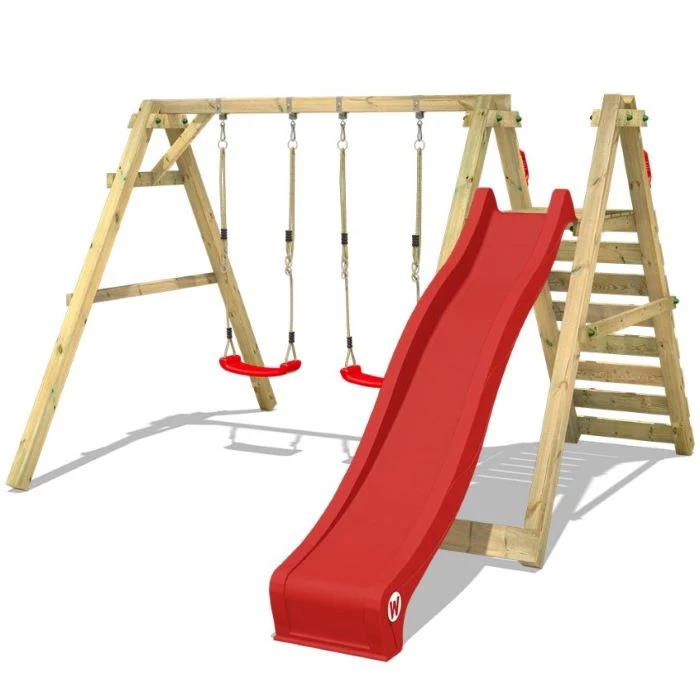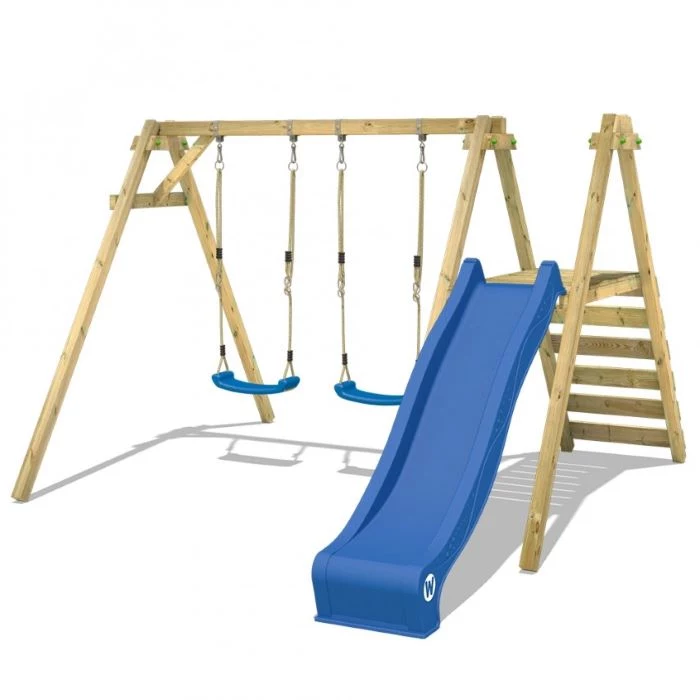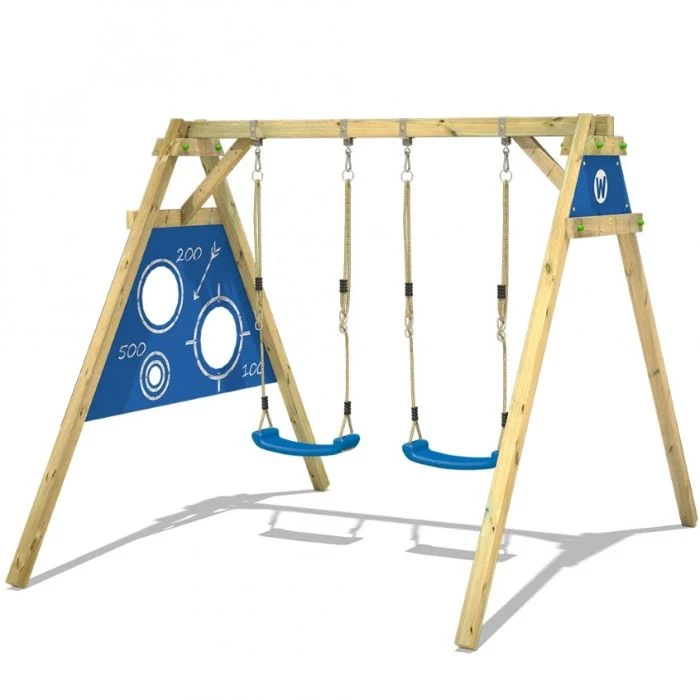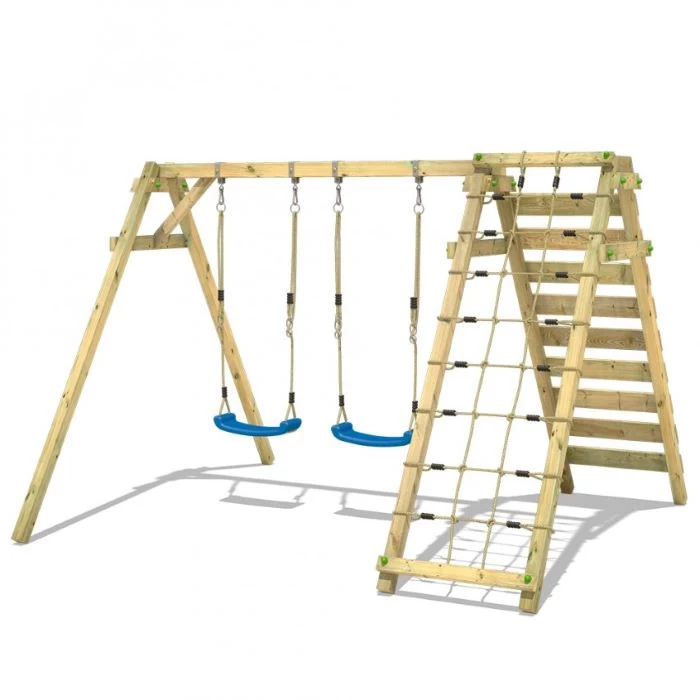Don’t Buy a Swing Set Until You Read This: A Builder’s No-Nonsense Guide
I’ve spent the better part of two decades putting together backyard playsets, and let me tell you, I’ve seen it all. I’m talking about everything from gorgeous cedar castles that looked like they were part of the landscape design to rusty metal frames that were basically a lawsuit waiting to happen. My hands can feel the difference between a solid 4×6 beam and cheaper laminated boards just by touch. I’ve dug footings in every type of ground you can imagine, and I know exactly what goes wrong when you skip that step.
In this article
- First Things First: Your Yard is More Important Than the Swing Set
- Let’s Talk Materials: Wood vs. Metal vs. Vinyl
- The Boring Stuff That Prevents a Disaster: Anchors & Hardware
- The Most Important Part: What’s UNDER Your Swing Set?
- Installation: The DIY Challenge vs. Hiring a Pro
- Your Annual Maintenance Checklist
- Inspirational Gallery
Here’s the biggest lesson I’ve learned: a swing set isn’t just a toy. It’s a mini-structure where your kids’ safety is everything. It’s totally natural to start by thinking about all the fun they’ll have, but my job has always been to worry about the physics, the materials, and the ground it all sits on. A public park has teams doing regular safety checks. In your backyard? That job falls on you. So, this is my attempt to download everything I know, from the ground up, to help you make a smart choice.

First Things First: Your Yard is More Important Than the Swing Set
Before you even browse a single catalog, you absolutely have to understand your space. Honestly, this is the most critical step, and it’s where most of the big mistakes are made. That perfect picture of a playset means nothing if it doesn’t fit your yard safely.
Understanding the ‘Use Zone’
The first concept the pros always talk about is the ‘Use Zone.’ It’s not just the space the swing set sits on; it’s the buffer area all around it where a kid might fall or, let’s be honest, jump off. National safety guidelines are really clear on this. A good rule of thumb is to have six feet of clear space in every direction around the structure.
But for the swings themselves, it gets more specific. You need to measure from the ground to the top bar the swings hang from. The clear space in front of and behind the swings needs to be twice that height. So, for an 8-foot-high swing beam, you need a 16-foot runway in front and another 16 feet behind. No trees, no fences, no deck railings. I once had a client who wanted to wedge a big set between their deck and a beautiful oak tree. I had to gently explain that a kid at the peak of their swing could easily smash into the deck. We ended up finding a safer spot and a slightly different model that fit perfectly.

Watch Out for Dangers Above and Below
Next, look up. Do you see any low-hanging tree branches or, even more serious, any power lines? You’ll want at least seven feet of clearance above the highest point of the playset—and yes, you have to assume kids will climb on the roof of the fort.
Then, think about what’s underground. Before you dig a single hole, make a quick call to the free national call-before-you-dig service. They’ll send someone out to mark the approximate location of buried utility lines. The last thing you want to do is hit a water pipe or gas line. Oh yeah, and if you have a septic system or sprinklers, make sure you know exactly where they are. Hitting a sprinkler head is annoying; messing up your septic field is a complete nightmare.
Is Your Ground Level?
Ideally, you want a spot that is perfectly flat. Even a small slope can make the whole structure unstable because the forces from swinging won’t be distributed evenly. I’ve seen some scary DIY solutions with wood blocks propping up one side—that’s just asking for a collapse as the blocks shift or rot. If your yard has a slope, you have two safe options: either excavate the area to create a level pad (which might require a small retaining wall) or buy a set with adjustable legs that can be anchored securely into the slope.

Let’s Talk Materials: Wood vs. Metal vs. Vinyl
The material you choose impacts everything: the look, the maintenance, and how long it will last. There isn’t a single ‘best’ material, only what’s best for your climate, budget, and how much yearly upkeep you’re willing to do.
The Classic: Wooden Swing Sets
Wood is beautiful and just looks right in a backyard. But the type of wood is what really counts.
Cedar is my go-to for most projects. It has natural oils that resist rot and bugs. It’s surprisingly lightweight but very strong. The downside? It’s a premium material. To give you a real-world idea, a decent mid-sized cedar set might run you anywhere from $1,500 to $3,000. It will fade to a silvery gray over time unless you seal it every year or two.
Pressure-Treated (PT) Pine is the common choice for more budget-friendly sets. It’s a softer wood that’s been chemically treated to resist decay. Modern treatments are much safer for residential use than the old stuff. PT wood is heavy and can warp or splinter if you don’t maintain it. A similar set in PT pine could be in the $700 to $1,500 range, making it a popular starting point. Heads up: It absolutely needs a water sealant applied every single year to keep it in good shape.

A quick pro tip on wood: Always check the main support beams. Are they solid pieces of wood, like a true 4×4, or are they smaller boards glued together? Solid beams are almost always stronger and have fewer points of failure.
The Modern Choice: Vinyl-Coated and Composite Sets
These are kind of the ‘best of both worlds’ option. They usually have a solid wood core (often PT pine for strength) that’s completely wrapped in a protective vinyl sleeve. This gives you the strength of wood with almost none of the maintenance.
You don’t have to stain or seal vinyl sets. They don’t splinter. You just hose them down to clean them. This convenience comes at a price, though. Vinyl sets often start where cedar leaves off, usually around $3,000 and climbing from there. They are a fantastic ‘set it and forget it’ choice, but the upfront cost is a hurdle for many.

The Practical Option: Metal Swing Sets
Metal sets have improved a lot over the years. Most are now made from galvanized steel with a powder-coated finish, so they resist rust much better than older models. The big plus is low initial maintenance. The downside? That coating can get scratched, and once the steel is exposed, rust will start. Also, on a hot sunny day, metal surfaces can get hot enough to cause serious burns, which is a big deal with little kids.
The Boring Stuff That Prevents a Disaster: Anchors & Hardware
Every single swing set needs to be anchored to the ground. Period. This is a non-negotiable safety rule. A heavy set might feel sturdy, but get a couple of kids swinging in sync, and the momentum can actually lift the legs off the ground and tip the whole thing over.
- Auger-Style Anchors: These look like giant corkscrews that you twist deep into the ground and bolt to the playset’s legs. They work great in most dirt. You can find these anchor kits at most home improvement stores, and a pack of four usually costs around $50.
- Concrete Footings: This is the most secure method, where you dig a hole and set the leg in concrete. If you live where it freezes, you have to dig below the frost line, or the ground heave in winter will push the footings right up, making the set unstable. This is usually a job for a pro.
Also, pay attention to the hardware. All bolts should be recessed or covered with plastic caps to prevent snagging clothes. A critical design rule is about preventing entrapment. Any opening, like between ladder rungs or railings, must be smaller than 3.5 inches or larger than 9 inches to prevent a child’s head from getting stuck.
The Most Important Part: What’s UNDER Your Swing Set?
If you only take one piece of advice from this whole article, let it be this: the surface underneath your playset is more important than the playset itself. Falls are the #1 cause of playground injuries, and the right surface is designed to absorb impact. Grass and dirt are NOT safe surfaces—they get hard as a rock in dry weather.
Engineered Wood Fiber (EWF) is one of the best and most common loose-fill options. It’s not just mulch; it’s processed wood fibers that knit together to create a soft cushion. For a typical set, you’ll need a depth of at least 9 inches. Budget-wise, you can expect EWF to cost around $4 to $6 per square foot, installed to the proper depth.
Rubber Mulch is another excellent shock absorber and lasts forever. It’s made from shredded tires. The downside is the cost and the fact that it gets hot in the sun. Be prepared for a bigger investment here, more like $8 to $12 per square foot. It definitely adds up, but the longevity is a big plus.
Installation: The DIY Challenge vs. Hiring a Pro
So, should you build it yourself or hire someone? Be honest about your skills and patience. A playset arrives in a mountain of boxes with a manual thicker than a novel. It’s a two-person job that can easily take a full weekend.
If you go the DIY route, here’s a pro tip: don’t fully tighten any bolts until an entire section is assembled. Get them hand-tight, which gives you the wiggle room you need to line everything up. Once a section is built, then you go back and crank everything down securely.
If you have any doubt, hire a pro. For a standard boxed kit from a big-box store, professional assembly usually lands in the $400 to $800 range. If your site needs significant leveling or the set is massive, that’s when you’ll start pushing past the $1,000 mark. It’s a small price for knowing it’s built right.
Your Annual Maintenance Checklist
Your job isn’t done after it’s built. A quick check-up each season will keep it safe for years. I once saw a swing beam fail completely because a single bolt had worked itself loose, slowly weakening the wood over time. A five-minute check could have prevented it.
Here’s a simple checklist to follow:
-
Spring Tune-Up: Grab a socket wrench and tighten every bolt and screw. Check all swing hangers and chains for wear. Sand down any splinters on the wood and apply a fresh coat of water-repellent sealant.
-
Monthly Quick-Check: Rake the loose-fill surfacing, especially under the swings and at the bottom of the slide, to make sure it’s deep and fluffy. Check for any wasp nests in the corners of the fort.
-
Fall Prep: Clean off leaves and debris. If you have a fabric canopy, take it off and store it for the winter to protect it from snow.
Choosing a swing set is a big decision, but it doesn’t have to be overwhelming. If you focus on getting the site right, picking the best materials for your budget, and never, ever skimping on the safety surfacing, you’re not just buying a toy. You’re building a backyard hub of happy memories that will last for years.
Inspirational Gallery
Cedar vs. Pressure-Treated Pine: Cedar is naturally resistant to rot and insects, giving it a longer lifespan with less chemical treatment. It’s also less prone to splintering. Pine is a budget-friendlier option, but it’s heavier and relies on chemical treatments for durability, which you’ll need to maintain with regular sealing. For a premium feel and natural resilience, cedar is the builder’s choice.
According to the U.S. Consumer Product Safety Commission, nearly 70% of all playground injuries are related to falls to the ground surface.
This statistic is why the material *under* your swing set is as important as the structure itself. A 9-to-12-inch layer of certified playground mulch, wood chips, or shredded rubber can absorb the impact of a fall far better than grass or dirt, dramatically reducing the risk of serious injury. Don’t treat the surface as an afterthought.
What’s the best way to anchor a playset without concrete?
While concrete footings offer maximum stability, heavy-duty ground anchors are a fantastic, less permanent alternative. These are long, corkscrew-like steel stakes that you twist deep into the ground. They attach to the base of the playset’s legs with brackets. Look for anchor kits specifically designed for playsets from brands like Creative Cedar Designs. They provide significant resistance against tipping and lifting during vigorous play, especially on sets that aren’t perfectly level.
- Reduced risk of splinters for little hands.
- A richer, deeper color that stands the test of time.
- Superior natural resistance to warping and decay.
The secret? Look for sets made from 100% premium cedar. While many kits mix wood types, high-end brands like Rainbow Play Systems or Gorilla Playsets pride themselves on using solid cedar beams, not just for cladding but for the core structure.
Don’t let a huge playset dominate your landscape. Integrate it! Use curved beds of low-maintenance perennials or ornamental grasses around the ‘Use Zone’ border to soften the edges. A simple flagstone or mulch path leading to the set makes it feel like an intentional destination. Planting a fast-growing, non-fruiting tree nearby (but safely outside the fall zone) can provide natural shade in the coming years.
Pro Tip for Assembly Day: Before you touch a single tool, open all the hardware bags and sort them into a compartmentalized organizer tray. The instructions will call for dozens of different bolts, washers, and nuts. Having them sorted and labeled beforehand can shave hours and immense frustration off the build time. It’s the first thing every professional installer does.
“A swing set is a dynamic structure; every bolt and joint is a potential point of failure if not maintained.”
Your annual spring checklist should be non-negotiable for safety. Here’s a quick rundown of what to inspect before the play season begins:
- Tighten all bolts and hardware, as wood can shrink and expand with the seasons.
- Check all wood components for splinters, decay, or cracks, especially on support beams and ladder rungs.
- Inspect swing chains and ropes for rust or fraying, and check S-hooks to ensure they are fully closed.
- Top up the ground surfacing material to ensure it’s still at a safe depth (at least 9 inches is recommended).
A common mistake: Forgetting to re-stain. Most wooden swing sets need a new coat of protective sealant or stain every 2-3 years to prevent water damage and UV fading. Don’t use standard house paint, which can chip and become slick. Instead, opt for a high-quality, oil-based exterior wood stain with a built-in sealant. It will penetrate the wood rather than just sitting on top.
The latest trend isn’t just swings and slides, but ‘ninja lines’ and obstacle courses. Brands like Ninjaline offer kits that you can string between two sturdy trees or specialized posts. They include obstacles like rings, monkey bars, and rope knots, providing a different kind of physical challenge that appeals to older kids and promotes strength and coordination.










